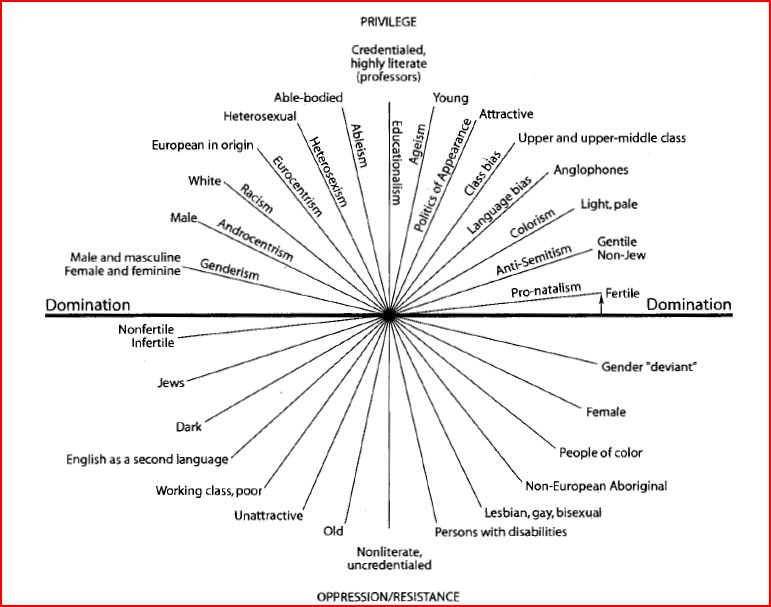The social construction of difference is a categorical system used to artificially define people. There is a baseline of “normal” in the US. This typically includes categories such as white, male, able bodied, heterosexual, Christian. Anyone that identifies differently from any of these normal groups is considered outside of the norm and labeled as “other”. The reason this distinction matters is because these categories and normalizations are created to support power dynamics. People benefit from identifying as normal because of how society reacts to them. This benefit is referred to as privilege.
Privilege allows “normal” people to go through life with general acceptance from society based on socially constructed categories. The “normal” segment of society is able to present their authentic self and use their identify as proof of their credibility. https://everydayfeminism.com/2014/09/what-is-privilege/
Oppression is the opposite of privilege and occurs to those that fall outside of “norm”. Oppressed people are denied access to opportunities that are granted to those in power simply due to socially constructed labels such as race, gender, sexual orientation, class, age, ability. It is easier to identify oppression than privilege. Oppression is the exclusion or conditional acceptance. People are more apt to identify when they are kept from opportunities but not when they are included unconditionally.

It is clear that the social construction of differences is used to divide people between privileged and oppressed. Differences between people is easy to identify. The conflict is when we choose to use these differences to perpetuate power dynamics that benefit some and hinder others.

